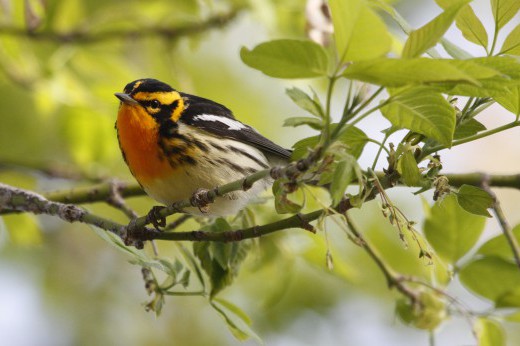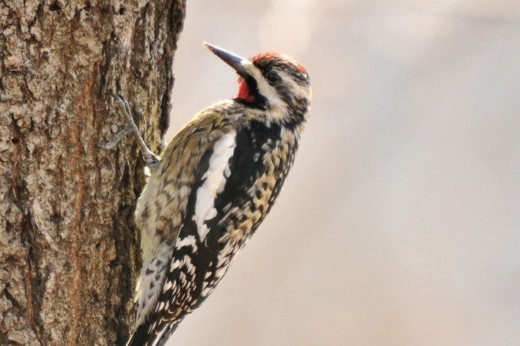Wild birds are my link to the natural world. In my city garden, I've created a small habitat for them, and they repay me with hours of "cheep" entertainment. Our wild bird populations are threatened by habitat loss, global warming, collisions with buildings, and much more. You too can help ease their plight by turning your garden, or a portion of it, into a pesticide-free bird sanctuary.
You'll need to provide the birds with food, water, protective cover, and a safe place to nest. The key is to install a low-maintenance, multilayered habitat of bird-attracting plants—preferably native to your area—which offer year-round shelter and sustenance. Also install a birdbath and a feeder filled with black oil sunflower seeds. (Note: These seeds may inhibit plant growth directly underneath feeder.) Last, place a birdhouse ten feet off the ground, facing east. Make sure the entry hole is 1 1/2 inches wide to exclude starlings, which plunder the eggs and fledglings of many native birds.
The plants in the design above are native to woodlands in the eastern U.S. and appeal to humans as well as birds. Grow them in fertile, moist but well-drained soil in sun or partial shade, unless otherwise indicated.

- Amelanchier canadensis (shadbush, serviceberry)
This deciduous multistemmed tree produces white spring flowers, edible blue-black summer fruits, and a rainbow of fall colors. Acidic soil. USDA Zones 3 to 7. - Ilex glabra (inkberry)
An upright evergreen shrub with shiny, dark green leaves, it offers birds a snack bar of black berries in fall. Male and female plants are needed for successful fruiting. Acidic soil. Zones 4 to 9. - Hystrix patula (bottlebrush grass)
This woodland grass produces upright tufts of narrow-bladed, green leaves. Delightful seed heads appear in summer and persist well into autumn. Zones 5 to 9. - Rudbeckia fulgida var. sullivantii 'Goldsturm' (black-eyed Susan)
This black-eyed Susan boasts a profusion of large yellow-orange flower heads with blackish-brown cones from late summer to autumn. Birds eat the mature seeds. Zones 4 to 9. - Aster novae-angliae 'Purple Dome' (New England aster)
Another seed-food plant for birds, this aster bears semidouble, deep purple flowers from late summer to mid-autumn. Zones 4 to 8. - Mitchella repens (partridgeberry)
A mat-forming evergreen with white-veined leaves and fragrant white flowers, it provides red berries by late summer. Zones 3 to 8. - Vaccinium angustifolium (lowbush blueberry)
This spreading, deciduous shrub produces fragrant white spring flowers followed by sweet-tasting blue-black berries. Acidic soil. Zones 2 to 8. - Symphoricarpos orbiculatus (coralberry)
A dense, bushy deciduous shrub, it bears clusters of bell-shaped white flowers in late summer and oval, dark purple fall fruit. Zones 2 to 8. - Celastrus scandens (American bittersweet)
This woody, deciduous climber produces clusters of small, greenish-white summer flowers and orange capsules that persist through winter. Zones 3 to 8.



